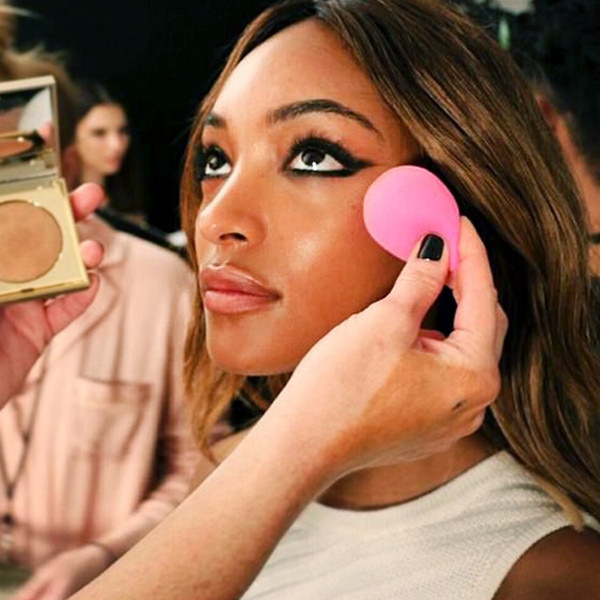
Enter all packaging components into the recyclable materials cycle according to instructions provided by your local waste management authority.Conversion to 100% recycled material (FSC) is underway. Made from 100% recyclable material from sustainable forestry (FSC). Good for the skin, better for the world: we invest in raw materials partnerships all around the world, providing interest-free loans and fair trade terms enabling local farmers to pay fair wages.Shorter transport distances are better for both the quality of the raw materials and the carbon footprint. 70% of our fresh plants are regionally sourced.Genuine, strictly certified organic farming helps protect our waters from agricultural run-off, strengthens the fertility of the soil and supports biodiversity. More than 80% of our plant-based raw materials are organically grown.Tip: Avoid submerging the whole brush under the water, as it can dissolve the glue that holds the brush together. Unavoidable CO₂ emissions are offset through Atmosfair. Step 1: Rinse Off Residual Makeup The American Academy of Dermatology Association (AAD) recommends beginning by rinsing your brushes underneath lukewarm, running water to remove residual makeup. 100% CO₂-neutral operations at our head office in Eckwälden, Germany.This will prevent excess dirt, oil, and product from building up–which will, in turn, prevent any breakouts. Sponge cleaning is an essential step in your makeup routine. A dry cleanser can also help you switch from one product to the next during your makeup routine for a true color application. It functions as a dry shampoo, but for your BeautyBlender.
#Cleaning makeup sponge full
If you’re on the go or don’t have time for a full soak clean, you can spot treat your makeup sponge with a dry cleanser. Plus, it really lets you get your hands in there. This method is the easiest since all it requires is soap and water. If you air dry, set it out–don’t let it trap moisture and grow bacteria in a zipped up makeup bag. Method 1: Clean your makeup sponge with soap and water. Most peeps clean it each night and let the blender air dry, so you can start fresh in the AM. Ideally, cleaning your makeup sponges should be done after each use. You can bounce your Blender gently on a towel to dry, but it’s important not to scrub! It’s ok to leave your sponge a little damp after cleaning. Rinse your makeup sponge again with warm water for a final cleansing. Don't worry–this is supposed to happen and will stop once you've washed it a few times. There’s also a travel-friendly SolidCleanser that includes a textured silicone pad to help scrub the surface of your blender.įYI: Each Beautyblender is made with non-toxic dyes, so it's totes normal for your water to turn pink during your first one or two washes as the dye may run a little bit. However, if you’re out, baby shampoo or antibacterial soap will temporarily suffice. Our BlenderCleanser is a no-brainer solution, as it’s specially formulated to clean your blender without compromising the integrity of its material.


Product buildup won’t sit on the surface of the sponge (like it does with silicone sponges), so lathering and squeezing is an essential technique in cleaning your blender.Ĭleaning your makeup sponges with any alcohol formulas, face wash, or by boiling or exposing to extreme heat, is a no, as this will break down the unique material. Remember, BeautyBlenders are silicone-free, giving them a porous texture (like your fingers), which enables its flawless makeup application. Swirl BlenderCleanser onto the sponge, and work into a gentle lather. Give your sponge time to soak up the warm water. When it comes to water temperature, think about your girl Goldilocks–not too hot and not too cold, but warm water is just right. To start cleaning your makeup sponge, get it wet by holding it under a running tap or soaking it submerged in a bowl of water. There are also a few common myths and misconceptions around cleaning makeup sponges - today, we wanted to clean some of those up (pun intended), so you can clean safely and preserve the longevity of your BeautyBlender and the health of your skin. But, do your best to wet, swirl, and rinse your blender on a regular basis. Cleaning day is obviously a loose term as it’s a pure miracle if I get to work without spilling my coffee every-single-day. Wet, swirl, and rinse your blender on cleaning day for a bacteria and makeup-free blender. We’re into our 3-step blending process at Beautyblender (wet, squeeze, bounce) and created something similar for cleaning. While you should replace your BeautyBlender every 3-6 months, like all makeup applicators, your blender should be cleaned on a regular basis.


 0 kommentar(er)
0 kommentar(er)
